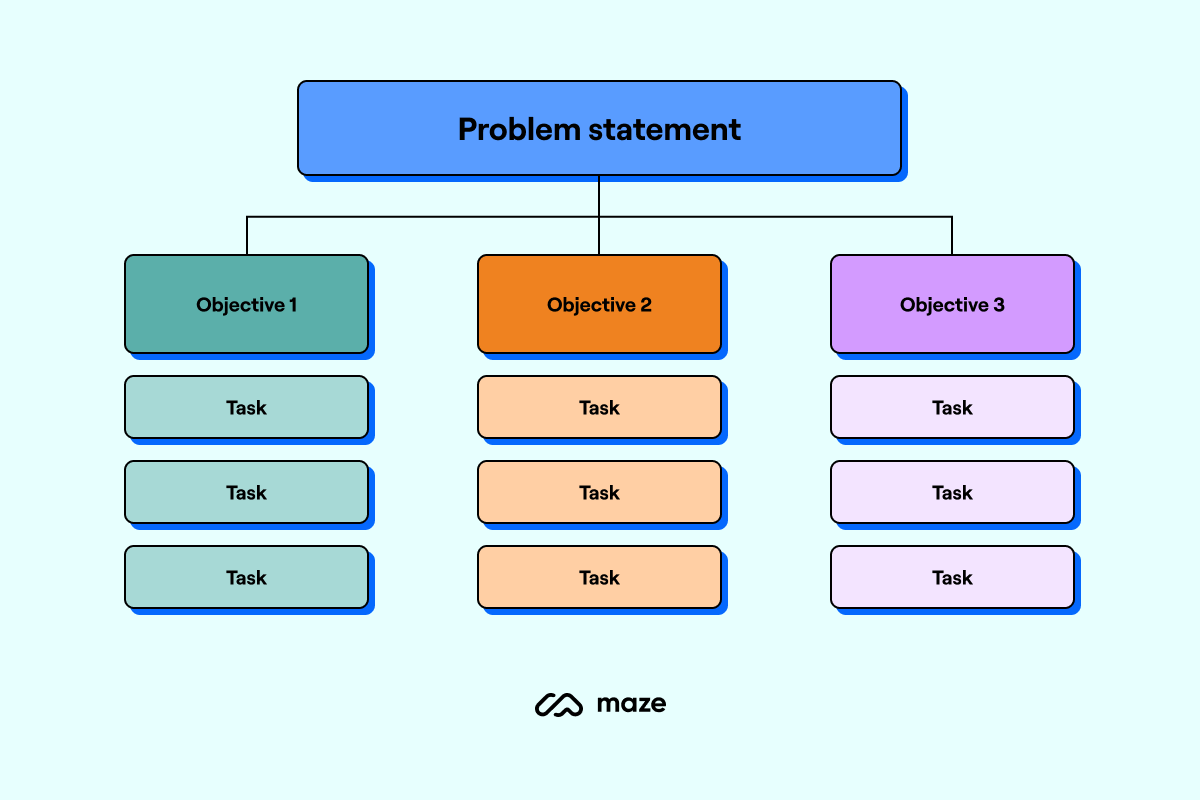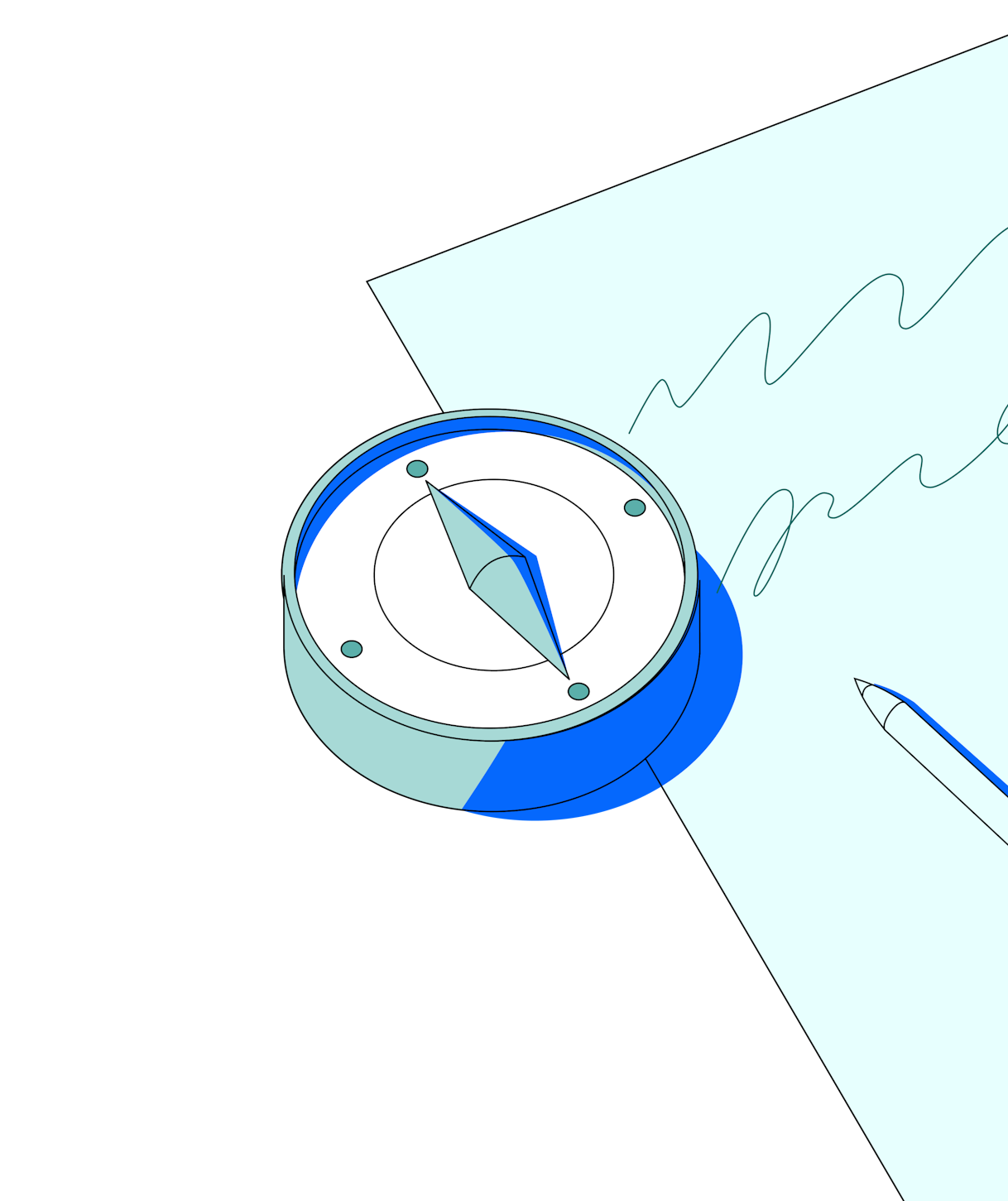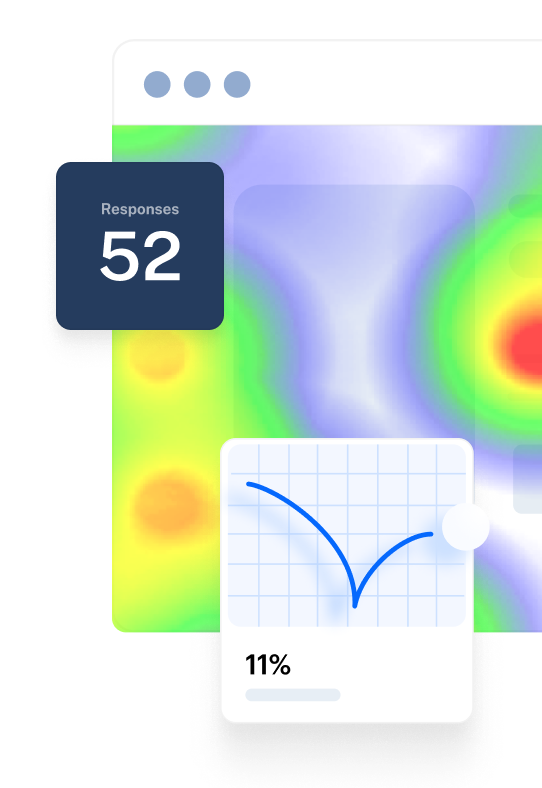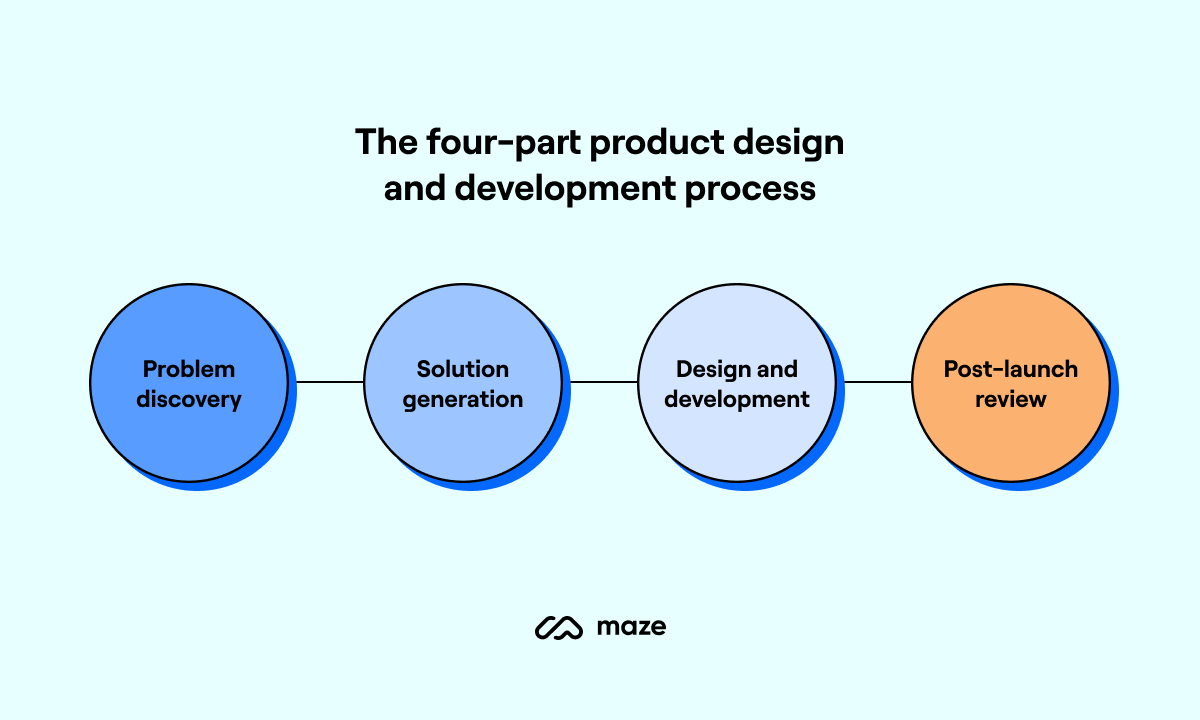Conducting a UX research study helps get feedback on your user’s pain points, expectations, and needs. The insights you collect inform your design decisions, ultimately helping you provide better user experiences.
But before it all begins, you need a solid UX research objective. These specific goals outline the direction for your entire research project; UX research objectives are the north star of any research study—guiding your project toward game-changing insights.
In this article, we’ll cover 20 examples of UX research objectives and explain how to write your own, to set your UX research project up for success.
Why do you need UX research objectives?
A UX research objective is an overarching goal you set to define the purpose of your UX research study. It determines the direction of your entire UX research project and enables you to choose the best UX research methods for collecting insights.
They also ultimately serve as guidelines and a benchmark for success, enabling you to track your progress and measure the impact of your UX research.
UX research objectives help you:
- Focus your research efforts: A specific objective helps you and your team focus on specific tasks and methods that collect relevant feedback from your users
- Align team members and stakeholders: Use your objective to ensure stakeholders and team members are all on the same page, setting the stage for seamless collaboration across multiple departments
- Allocate resources efficiently: Your objective allows you to allocate time, budget, and personnel while prioritizing tasks that lead directly to project success
- Inform success criteria: With a clear research objective, you define what success looks like, outline metrics to track and KPIs to focus on
What makes a good UX research objective (and a bad one)?
A good UX research objective guides your UX research efforts with a clear definition of what you want to achieve, why you want to achieve it, and what success looks like. Good research objectives should follow the SMART framework:
- Specific: Your objective should be clear and precise enough to guide research without ambiguity
- Measurable: You should be able to measure your objective’s success in one way or another, whether that’s during the research phase or any other phase of the UX design and development phase
- Achievable: It must be realistically possible for you to achieve your objectives with the time, resources, and research methods you have available to you
- Relevant: It should be closely tied into your user’s overall goals and your business objectives
- Time-bound: You need to be able to put some form of time frame on the objective if necessary (even if that’s implicit)
An example of a SMART UX research objective:
✅ “Evaluate onboarding usability and increase onboarding task completion to 70% over a period of three months.”
This is an objective you can work toward. It has a clear purpose, measurement criteria, and timeline. Bad UX research objectives, however, fail to set a direction for your UX research project. They’re broad, unspecific, and vague, such as:
❌ “Improve the onboarding process for users”
You see? With the first objective, you know exactly what you intend to accomplish through UX research. Perhaps you can already visualize which methods to use, like UX surveys or usability testing.
Option one is a strong UX research objective because it points you in a specific direction. Option two, on the other hand, fails to define boundaries for your UX research project. It doesn’t outline a specific direction or intent that enables you to evaluate the success of your study.
20 Examples of UX research objectives to suit each stage of the product development process
Let’s say you’re designing an e-commerce platform. Your UX objectives will look different depending on where you are in the design process.
To help you create effective objectives for your specific phase, we’ve distilled the design and product development process down into four clear phases, and provided five examples for each stage.
Just to say—these examples don’t always include specific metrics to track, or timelines for the research, as these elements of a SMART goal are very individual to each project.
5 Example UX research objectives for the problem discovery phase
In the problem discovery phase, you’re looking to conduct generative research to uncover the pain points and problems users have when using your product. This could be anything from issues navigating the interface, to missing features that would help users achieve their specific goals.
Potential UX research objective examples are:
- Create three personas that represent our users and their problems
- Uncover what usability problems users have while interacting with our product
- Map out the user journey from sign up to the aha! moment
- Investigate if users have problems navigating our product’s onboarding process
- Identify specific drop-off points within the user journey
⚙️ Need a tool to help achieve your research objectives during problem discovery research sessions? Maze’s Interview Studies and Feedback Surveys are a great way to collect qualitative and quantitative data to identify user issues and pain points to inform your research objectives.
5 Example UX research objectives for the solution generation phase
Once you know what issues users have with your product, you still need to understand the root causes, what users expect from solutions, and how you can introduce a solution that optimizes the experience.
Here, you need to propose specific design solutions that could potentially smooth out interactions and eliminate friction points throughout the user journey.
Going back to our e-commerce example, potential UX research objective examples are:
- Understand what specific usability issues might be causing customer drop-off at the checkout phase
- Establish what users expect from their user profile management experience
- Gauge user interest in a profile dashboard to help users better navigate their profile page
- Investigate if personalization could make the website more intuitive for users
- Explore potential solutions for users who abandon their shopping carts during the checkout phase in the user journey
5 Example UX research objectives for the design and development phase
During this phase, you’re designing and developing the proposed solution you generated during the previous step. But before these solutions go live, you need to test if they adequately solve user problems as you anticipated.
This typically involves creating and testing a prototype. Some UX research objectives during the design and development phase include:
- Establish if users can complete tasks with the lo-fi prototype design of the proposed solution
- Understand which of two dashboard wireframes is more intuitive to existing users
- Validate the information architecture of your design prototype
- Uncover if users have any usability issues with our proposed design
- Evaluate new feature interest to prioritize development initiatives
5 Example UX research objectives for the post-launch phase
UX research is an iterative, continuous process. There’s no start or finish, it’s a cycle that continually repeats. Once you design, develop, and launch a new product, feature, or experience—you need to research its impact. Setting post-launch UX research objectives measures if your UX research process was a success. Five of these objectives could be:
- Establish if we’ve solved core usability problems for users with the new feature
- Understand if users are more satisfied with their overall experience since introducing the new feature
- Evaluate user satisfaction with the updated interface’s usability
- Identify the impact our new feature had on user engagement and conversion rates
- Determine if our initial hypothesis was correct e.g. the solution will increase customer retention
⚙️ Looking for a tool to help hit your UX research objectives post-launch? Maze’s Live Website Testing and In-Product Prompt are purpose-built to help you gather real-time user insights.
How to write clear and effective research objectives: 4 Best practices
Writing your own UX research objective can be daunting. After all, it serves as the foundation for your entire UX research project. A wrong objective is a missed opportunity to start your UX research strong and guide your research team, resources, and efforts in the direction of actionable insights. That’s why we’ve outlined steps and best practices to help you get it right.
Begin by assessing both user and stakeholder needs. Use reviews, user personas, results from past UX projects or your UX research repository to identify the most pressing concerns for your users. Then, balance them with your stakeholders’ wider business goals. Finally, write what you intend to uncover through your next project, based on user needs and stakeholder goals.
To ensure your UX research objectives are as effective as can be, follow these four best practices.
1. Start with a problem statement
Having trouble defining your project’s objective? Start with a problem statement instead. These should clearly define the issues your users are having—they identify and call out pain points, enabling you to get a better idea of what your objectives should be.
This will not only help you think of objectives, but help you organize your team further and delegate tasks.

For example, a problem statement could be “Users are having trouble navigating their customer profile pages” From there, your objective may become “Uncover specific usability and navigation issues with design elements on the profile page.”
A problem statement helps inform your research objectives and research questions by highlighting the overall issue you’re looking to solve.
2. Make UX research objectives actionable
One thing that all strong UX research objectives share is their actionability. Your objective should be active, defining what you want to achieve from the very start of the sentence.
Doing so ties it to a tangible outcome, helping you clarify what you want while pointing your efforts in the right direction.
Here are some actionable ways to start your UX research objectives:
- Evaluate the usability of…
- Identify user friction points throughout…
- Measure increases in…
- Compare satisfaction between…
- Explore potential solutions for…
- Understand how users approach…
- Assess if users…
Starting your objective with a command helps structure your objective from the get-go.
3. Use only one to three objectives per study
Write too many objectives, and you risk being able to focus on none—ultimately putting your project’s success at risk.
While branching out your efforts is beneficial for more complex studies, having too many objectives can result in spreading your resources too thin.
One to three objectives per study is a good rule of thumb. This range ensures you maintain clarity and focus throughout your project—the whole reason you're writing UX research objectives in the first place.
Make sure that the objectives of your research project are connected in scope and theme, too. If you’re using more than one objective, each should allow you to hone in on a specific issue from multiple angles, not explore three different issues. With the above example, a group of three objectives might look like:
- “Assess the ease of navigation and efficiency of the search functionality on user’s profile pages.”
- “Understand how users prefer to view products and settings on their profile pages.”
- “Evaluate the effectiveness of the product dashboard on user profile pages.”
4. Ask stakeholders and team members for feedback
With your freshly-written UX research objectives, you’re probably excited to get started on your UX research. However, you still need to get feedback from stakeholders and team members. Doing so helps you identify:
- The relevance of your outlined objective
- Potential roadblocks during later phases of your UX research project
- How well your objectives align with wider business goals
You might need to refine your UX research objectives based on the feedback you receive. For example, stakeholders might raise concerns about your objective’s feasibility or question if it can help achieve wider business goals like reducing churn or increasing retention. Don’t be afraid to revisit and rework your objectives until everyone’s aligned. This will lead to a stronger result overall.
Achieve your UX research objectives with Maze
UX research objectives are the starting point for a fully-fledged UX research plan. From there, you can begin your project, test with real users, and get the insights you need for designing user-centered products.
Given you have the right tool, that is.
Maze is a leading user research platform that makes the process easy. Choose from a wide range of moderated and unmoderated UX research methods and get shareable insights with automated reporting features that make presenting your findings to stakeholders a breeze.
Frequently asked questions about UX research objectives
How do you write a user research plan in UX?
How do you write a user research plan in UX?
A UX research plan is a systematic roadmap for organizing your UX research efforts. To create one, you need to outline:
- Objectives
- Research methodologies
- Participants
- Timeline
- Deliverables
What is an example of a research goal in UX?
What is an example of a research goal in UX?
An example of a research goal in UX would be “identify navigation issues for the checkout process on our new e-commerce app.”
What is the purpose of UX research?
What is the purpose of UX research?
UX research aims to understand user behaviors, needs, and preferences to inform the product design process and improve user experience. Through user research methods, organizations can uncover insights that help them create more intuitive, relevant, and successful products.
What’s the difference between UX research objectives and UX research goals?
What’s the difference between UX research objectives and UX research goals?
UX research objectives and UX research goals are generally interchangeable terms but often differ in the level of specificity and detail. UX research objectives are more specific, measurable, and actionable, often supporting broader goals. UX research goals, on the other hand, are broad, often general statements that state what UX research aims to achieve.







